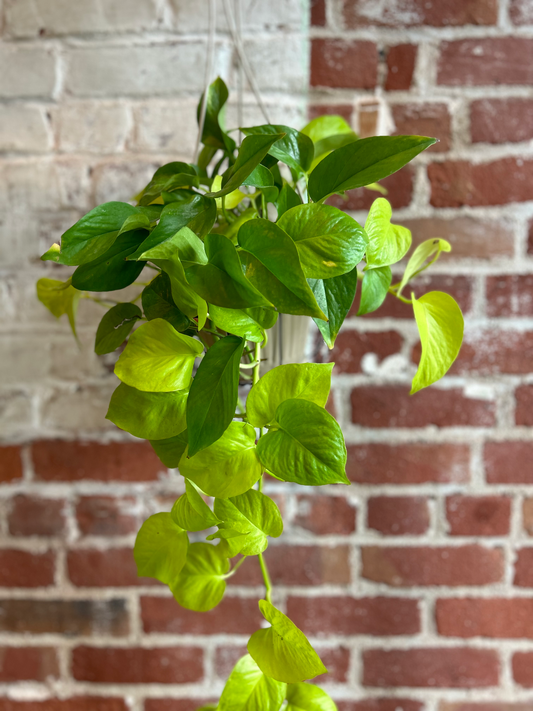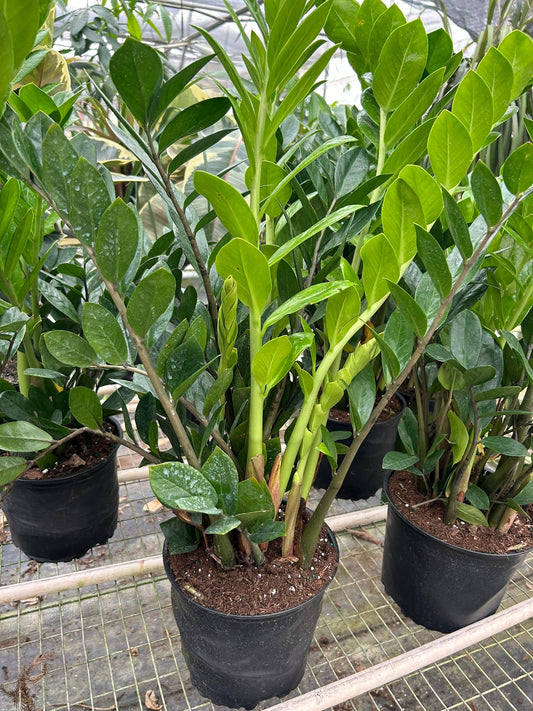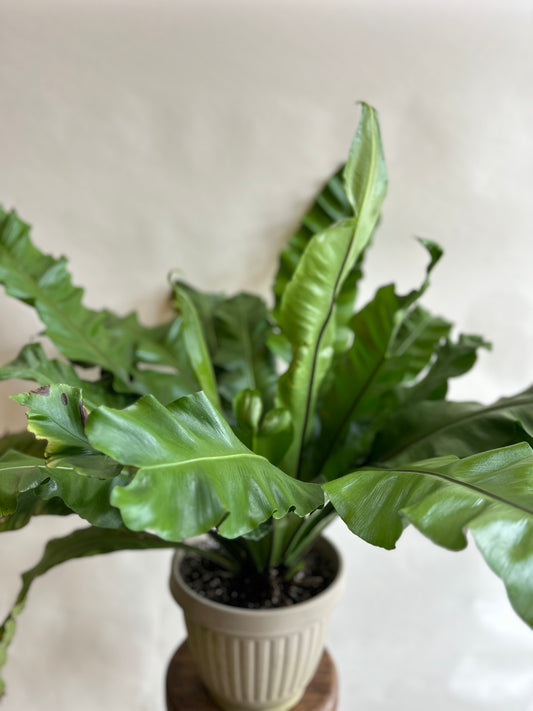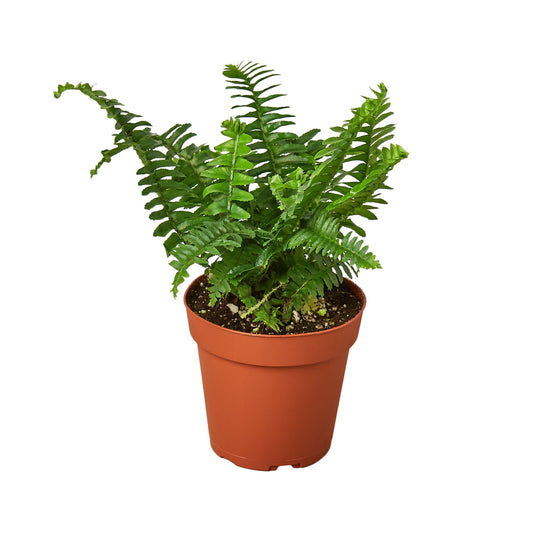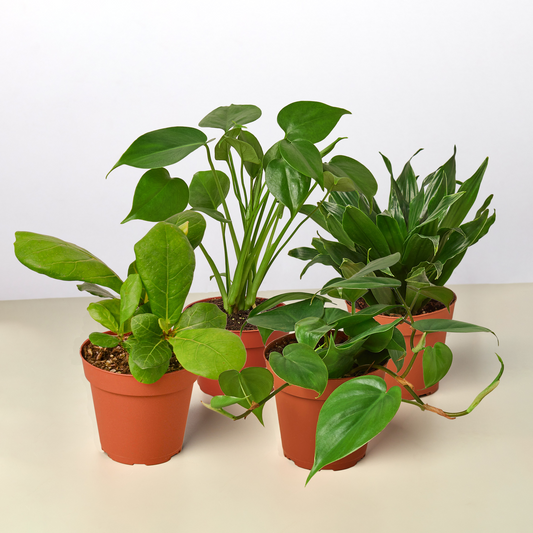Are Green Spider Plants Toxic to Cats?
Cafe Planta Team
Isn't it fascinating how our homes can become tiny jungles filled with plants that not only beautify our spaces but also bring a little bit of nature indoors? Among these lovely green companions, the Spider Plant stands out as a popular choice for many plant lovers. But if you're a cat parent, there's always that lingering question: Are green Spider Plants toxic to our feline friends?
In this blog post, we’ll explore the relationship between green Spider Plants and cats, discussing whether these plants pose any danger to your furry buddies. We’ll also cover some general care tips for Spider Plants, how to identify if your cat has nibbled on them, and what steps to take in such cases. So, if you’re juggling the roles of a plant parent and a cat lover, keep reading to find out how you can keep both your plants and cats safe and happy.
Understanding the Spider Plant
First, let's talk about the Spider Plant itself. Known scientifically as Chlorophytum comosum, this plant is a favorite among indoor gardeners. It's easy to care for, thrives in a variety of light conditions, and has a unique appearance with its long, arching leaves. The name "Spider Plant" comes from the plant's tendency to produce 'spiderettes' or little plantlets that dangle like spiders from the mother plant. These plantlets can be easily propagated, making it a plant that keeps on giving.
Spider Plants are native to tropical and southern Africa, but they’ve adapted wonderfully to indoor environments around the world. They come in a few different varieties, with the green Spider Plant being one of the most common. Its ability to purify the air is another reason why it’s such a hit among plant parents.
Despite their hardy nature, Spider Plants need some basic care to thrive, which we’ll get into later. For now, let’s focus on what you really want to know: Are they safe for your cats?
Are Spider Plants Toxic to Cats?
This is probably the question that's been bouncing around your head if you're both a plant and a cat enthusiast. The short answer is no, Spider Plants are not considered toxic to cats. That’s a relief, right? While they are non-toxic, there's a bit more to the story.
Spider Plants contain chemical compounds that are mildly hallucinogenic to cats. Some people compare their effect to that of catnip, causing your feline friend to feel a little "buzzed". This might explain why some cats seem particularly drawn to nibbling on these plants. While this behavior is not inherently dangerous, it could lead to some tummy troubles for your cat.
Ingesting a large amount of Spider Plant leaves might cause vomiting or diarrhea in some cats, but these symptoms are generally mild and resolve on their own. However, it’s always a good idea to keep an eye on your pet and consult a vet if you notice any concerning symptoms.
Why Do Cats Eat Spider Plants?
If Spider Plants aren’t toxic, why do cats insist on munching on them? Turns out, there are a few reasons. First off, cats are natural explorers. They use their mouths to investigate their surroundings, and plants are no exception. The texture and movement of the Spider Plant's long leaves can be particularly enticing to playful kitties.
Another reason is the mild hallucinogenic effect we mentioned earlier. Cats might be drawn to the Spider Plant for the same reasons they are attracted to catnip. The compounds in the plant can provide a bit of a "high", making it an attractive snack for your curious pet.
Lastly, cats sometimes eat plants to help with digestive issues. In the wild, felines consume grass to help them regurgitate indigestible material from their stomachs. If your cat is eating plants, it might be their way of managing an upset stomach.
Preventing Your Cat from Eating Spider Plants
While Spider Plants aren’t harmful, you might still want to discourage your cat from gnawing on them. Here are a few tips to help keep your plant and cat safe:
- Placement: Keep your Spider Plants out of your cat’s reach. Hang them in baskets or place them on shelves that are difficult for your cat to access.
- Distractions: Provide alternative plants for your cat to chew on, such as cat grass, which can satisfy their urge to munch on greens.
- Training: Use positive reinforcement to train your cat to stay away from your plants. Reward them when they ignore the plants.
- Repellents: Consider using pet-safe plant deterrents that make the leaves taste unpleasant to cats.
By using these strategies, you can keep your plants intact and your cats happy.
Caring for Your Spider Plant
Now that you're more relaxed about the safety of your cat, let's focus on keeping your Spider Plant healthy. These plants are known for being low-maintenance, making them perfect for both experienced plant parents and those just starting out.
Here’s a quick rundown of how you can care for your Spider Plant:
- Light: Spider Plants prefer bright, indirect light but can tolerate lower light conditions. Avoid direct sunlight, as it can scorch their leaves.
- Water: Water your Spider Plant when the top inch of the soil feels dry. Be careful not to overwater, as this can lead to root rot.
- Soil: Use well-draining soil to keep the roots healthy. A standard potting mix should work well for Spider Plants.
- Humidity: These plants enjoy a bit of humidity, but they’re quite adaptable. If your home is very dry, consider misting the leaves occasionally.
- Fertilizer: Feed your Spider Plant with a balanced liquid fertilizer every couple of months during the growing season (spring and summer).
With these simple tips, your Spider Plant should thrive and continue to brighten up your space.
How to Recognize if Your Cat Has Eaten a Spider Plant
Despite your best efforts, you might occasionally find your cat has taken a nibble of your Spider Plant. How can you tell? Look for these signs:
- Chewed Leaves: The most obvious sign is chewed or missing leaves. If your plant looks a bit ragged, your cat may be the culprit.
- Vomiting: If your cat has eaten a large amount, they might vomit shortly after.
- Diarrhea: Another sign of plant ingestion can be loose stools.
- Increased Playfulness: Your cat may appear more playful or hyperactive due to the mild hallucinogenic effects.
If you notice any of these signs, monitor your cat closely. Most of the time, they will be just fine, but consult your vet if symptoms persist.
Steps to Take If Your Cat Eats a Spider Plant
If you catch your cat in the act or notice signs they've been snacking on your Spider Plant, don't worry. Here’s what you can do:
- Remove the Plant: Move the plant to a location that’s out of your cat’s reach to prevent further nibbling.
- Monitor Your Cat: Keep an eye on your cat for any signs of distress or discomfort.
- Encourage Hydration: Make sure your cat has plenty of fresh water to help flush out any plant material.
- Consult a Vet: If your cat shows signs of prolonged vomiting, diarrhea, or any other unusual behavior, contact your veterinarian for advice.
Most cats will recover without any issues, but it's always better to be cautious.
Alternatives to Spider Plants If You're Concerned
If you're still not comfortable having Spider Plants around your cats, there are plenty of other pet-safe plants to consider. Here are a few options that are both beautiful and worry-free:
- Boston Fern: A lush, green plant that is non-toxic to cats and adds a lovely touch to any room.
- Areca Palm: This palm is safe for pets and can bring a tropical feel to your home.
- Calathea: Known for their striking leaf patterns, Calatheas are safe for cats and relatively easy to care for.
- Parlor Palm: Another pet-friendly palm that thrives indoors and is easy to maintain.
These plants can provide the same aesthetic benefits as Spider Plants without the worry.
Creating a Cat-Friendly Plant Space
Balancing a love for plants and cats is totally doable with a bit of planning. Here are some ideas for creating a cat-friendly plant space:
- Dedicated Cat Zone: Set up a special area with cat-friendly plants like cat grass and catnip to distract them from your other greenery.
- Vertical Gardens: Use wall planters or hanging baskets to keep plants out of your cat's reach while adding greenery to your home.
- Plant Shelves: Securely mount shelves to display your plants higher up, away from curious paws.
- Cat Repellent Plants: Consider plants like rosemary or lavender, which can deter cats with their strong scents.
By designing your space thoughtfully, you can enjoy the best of both worlds: a home filled with plants and a happy, safe cat.
Final Thoughts
To sum it up, while green Spider Plants are not toxic to cats, they can cause some mild digestive upset if ingested. With a few precautions, you can keep both your plants and your feline friends safe. Remember, it’s all about finding the right balance between your love for plants and your responsibility as a pet parent.
At Cafe Planta, we're passionate about helping you create a beautiful, thriving plant collection in your home. Whether you're a seasoned plant parent or just starting your journey, we offer a wide variety of houseplants and accessories to suit your needs. If you have any questions about plant care, feel free to email us, or reach out on Instagram. We're here to support your plant journey and help you connect with nature and your community.


